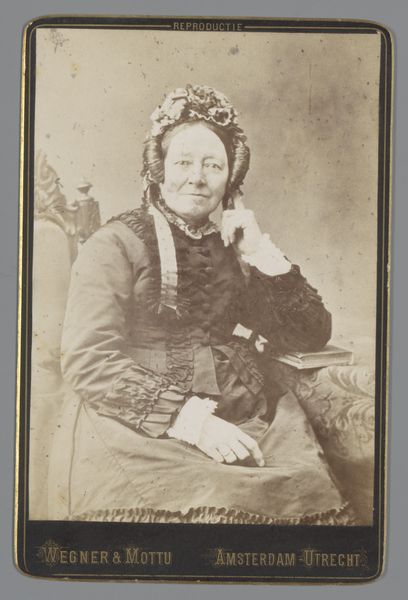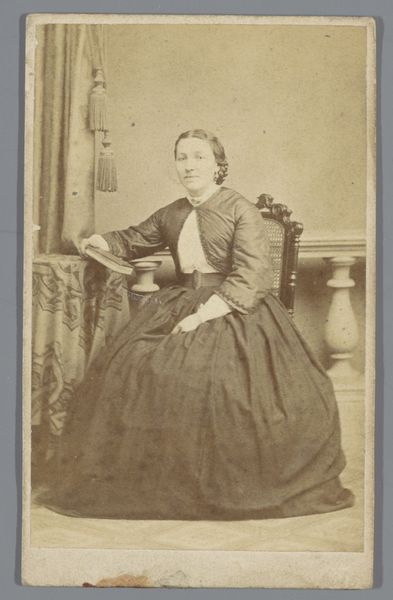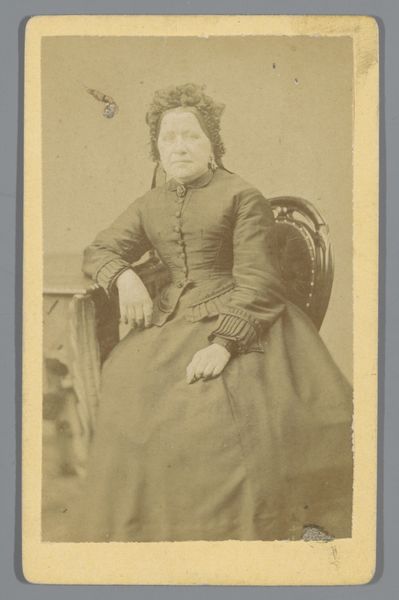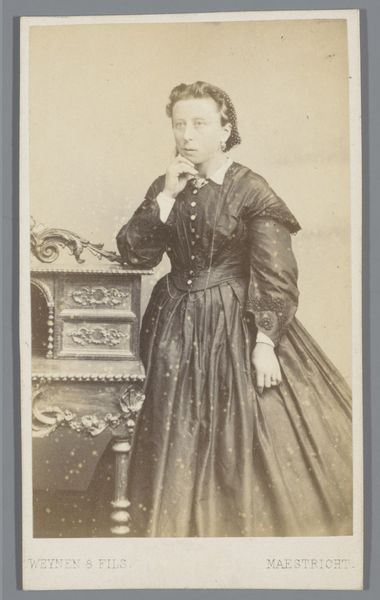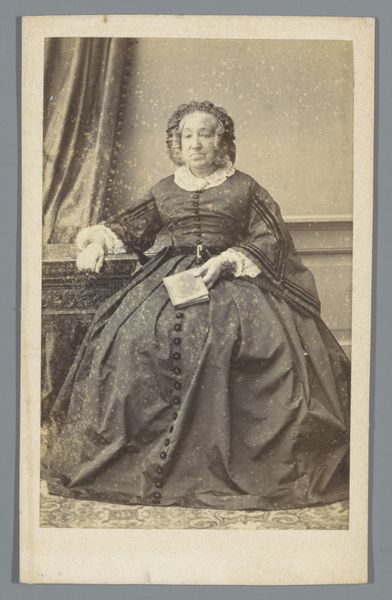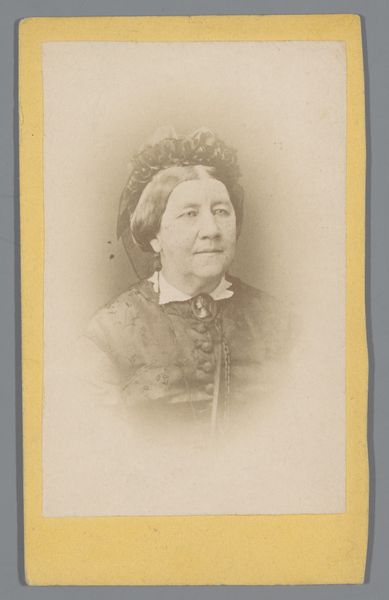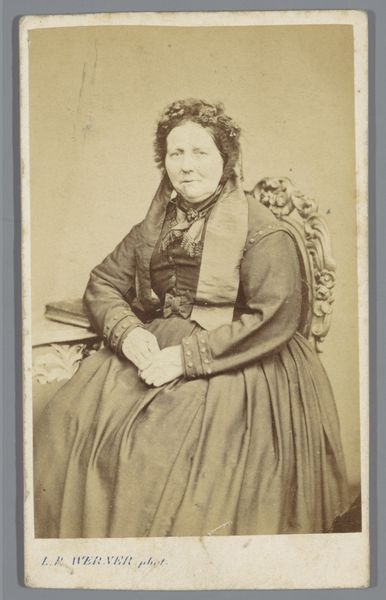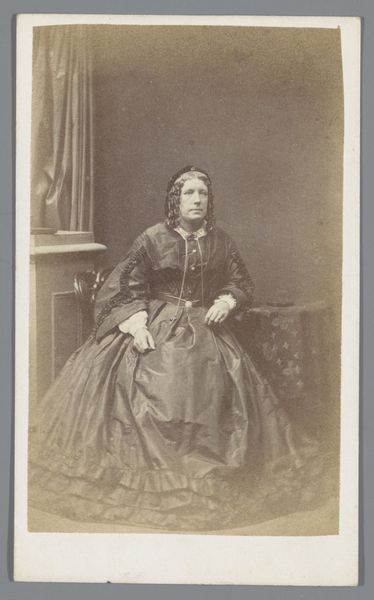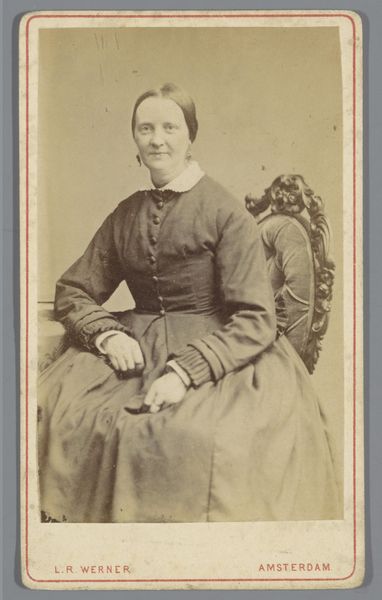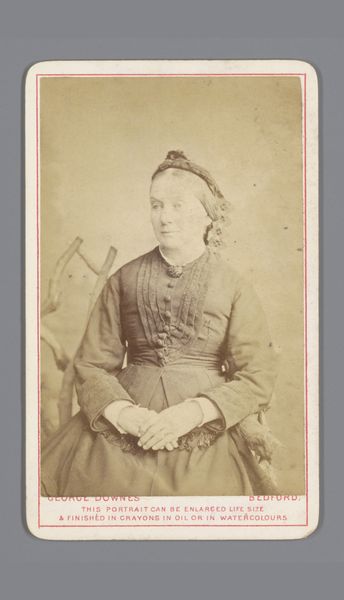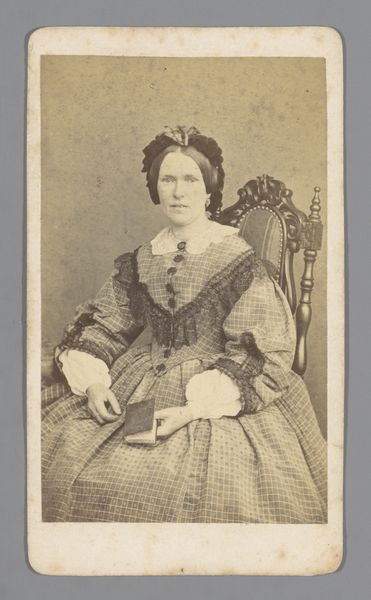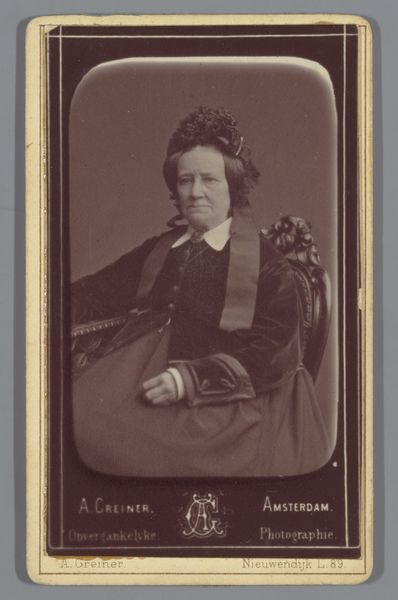
photography
#
portrait
#
photography
#
genre-painting
#
realism
Dimensions: height 105 mm, width 64 mm
Copyright: Rijks Museum: Open Domain
Curator: Wegner & Mottu captured this image in 1877. Titled "Portret van Maria Engelina Jonker van Zijp," it's a genre painting presented in photographic form. Editor: Well, she certainly looks...comfortable. Is she mid-thought, mid-sermon, or perhaps just mid-afternoon tea? It’s like catching a glimpse of someone’s great aunt settling into her favorite chair for a nap, complete with the most wonderfully frilly bonnet. Curator: Precisely! These photographic portraits offer fascinating insights into bourgeois society. Note the studio markings: "Wegner & Mottu. Amsterdam-Utrecht" – indicative of the burgeoning photography businesses catering to a desire for self-representation among the middle class. Editor: "Self-representation"...yes, in the most meticulously curated way possible. All that detail, you can tell somebody invested serious time in crafting an identity here. What is she holding? Is that a little book, and how perfectly does its brown cover match her gown. She definitely understood the assignment. Curator: Absolutely. It highlights how photography allowed for democratization, in a sense. Suddenly portraiture wasn't only for the aristocratic elite. But I am wondering, why a book in the shot? Perhaps signaling intellect, status, education...? It may provide insight into the subject’s perceived social role and identity. Editor: I love that you point to access here because what looks quaint now, was revolutionary at the time. Think about who gets remembered in our world, historically. Suddenly photography offered regular folk a way to insert themselves into that ongoing narrative. Curator: That is astute! It speaks to broader discourses of visibility and representation, questioning whose stories are told, and how, in the annals of history. I like how the subject’s gaze, even across time, makes us contemplate her individual narrative within those parameters. Editor: Agreed. So, while the bonnet and ruffles might seem a tad antiquated at first glance, they're little breadcrumbs leading to a much larger, ongoing dialogue about identity, agency, and, ultimately, the democratization of storytelling itself. Makes you want to pull up a chair and listen, doesn't it?
Comments
No comments
Be the first to comment and join the conversation on the ultimate creative platform.
